Surprise Yourself with Oregon Chardonnay
“Oregon Chardonnay often possesses power and finesse that is unique to Oregon,
regarded highly and appreciated by those who find it fits their sensibilities.”
Brian Marcy, Big Table Farm
Pinot Noir is still Oregon’s signature grape, but the many changes taking place with Oregon Chardonnay are
now surprising more wine drinkers. With more plantings, focus on site and viticulture, enthusiastic vintners
showing interest and commitment to finding out what works best for Chardonnay in Oregon, a renaissance is
unfolding.
Over the past fifty years since the initial plantings of Chardonnay in the Willamette Valley by David Lett, some
wineries in Oregon have always been successful with Chardonnay, but the resurgence is the result of a number
of factors that have improved upon the potential that was always evident. As Jason Lett of The Eyrie Vineyards
has noted, “Oregon Chardonnay was always good when it was grown by people who understood Chardonnay.”
Until recently, as Oregon emerged as a world-class wine region, there were only a few vintners who took
Chardonnay seriously despite the fact that Chardonnay, like Pinot Noir, was well suited to the Region I climate
of the Willamette Valley. For several decades, the best sites in the Willamette Valley were planted to Pinot Noir,
with Chardonnay ending up in lesser sites because it was considered a commodity wine with considerably less
economic return. Erica Landon, a sommelier and partner in Walter Scott Wines, told me, “Some believed in
Chardonnay and planted great vineyards early on, but most did not, and most followed trend and money.” Vines
were not cropped and otherwise farmed appropriately, and over manipulation was common in attempts to
emulate the popular California style of Chardonnay.
Today, dramatic changes are ongoing with Chardonnay plantings in Oregon. Erica Landon explained, “You are
seeing great sites planted entirely to Chardonnay, with thought going into rootstock, clones and planting
techniques. These vineyards are farmed with utmost care. The viticulturists are learning what works best for
Chardonnay here and are pushing the standards to a higher level. We are learning how canopy management
can have a huge impact on Chardonnay quality, how to pinpoint harvest dates that the pH and acid balance
that we are hoping for, and not cutting any corners.”
Pinot Gris has traditionally been Oregon’s signature white wine and still outnumbers Chardonnay plantings. The
2015 Oregon Vineyard and Winery Census Report reveals a planted acreage of 3,615 for Pinot Gris in Oregon
compared to 1,564 for Chardonnay, with the majority of plantings in the Willamette Valley. However, while Pinot
Gris plantings and production remain have remained static in recent years, Chardonnay plantings and
production are increasing. For most Oregon vintners, Pinot Gris remains a commodity wine, while Chardonnay
has become an ultra premium wine.
A signature style of Oregon Chardonnay is now evident. The wines tend to have less “makeup,” with limited use
of new oak. They are a little riper and richer than examples of Chardonnay from Burgundy, yet stop short of the
ripeness, fruitiness and viscosity of many California Chardonnays that are also frequently more oak infused.
Oregon’s vintage variability also separates the Chardonnays from those of California with the best examples
often made in cooler years. Also, Oregon Chardonnay tends to be lower in alcohol, higher in natural acidity,
flavors focused on citrus and green apple, show admirable balance, and are unrivaled food wines. Fans of
buttery, well oaked Chardonnay might be disappointed.
For the full story on the history and evolution of Oregon Chardonnay, visit www.princeofpinot.com/article/1821/.
An indication of the interest in Oregon Chardonnay is the annual Oregon Chardonnay Celebration. Now under
the auspices of the International Pinot Noir Celebration, this popular event attracts upward of 300 attendees at
the Allison Inn & Spa in Newberg for seminars and tasting. Visit www.oregonchardonnaycelebration.org.
May is Oregon Wine Month and a perfect time to introduce yourself to Oregon Chardonnay!
I reviewed a number of newer releases of Oregon Chardonnay. As you can tell by my accolades and the lofty
scores, I am an enthusiast. The wines are from the 2014 and 2015 vintages, both considered “dry” years in the
Willamette Valley. However, while in 2014 the growing season was uneventful with harvest occurring under
warm, sunny skies, in 2015 the warm and dry growing season was interrupted by rainstorms at the end of
August followed by a cool September and early harvest.
I asked Erica Landon of Walter Scott Wines to contrast the 2014 and 2015 vintages for Chardonnay in the
Willamette Valley. “2014 was one of the driest vintages on record, essentially ZERO rain for over 90 days. It
was warm, but never over 90 degrees. Grapes were picked early enough to have low pH and alcohols, with
good acid structure. In 2015, it has hot with numerous days over 90 degrees and even some days close to or
over 100 degrees. But the nights were much cooler and we had a bit more rain, balancing out the heat and
allowing the grapes to retain better acidity. The 2015 Chardonnays are similar in character and ABV, but have
lower pH and better polish and tension.”
Evening Land, Salem, Oregon
Evening Land Vineyards has a complicated history beginning in 2005. See the entry under Evening Land in the
Winery Directory of the PinotFile for full historical details. At one time, Evening Land owned a total of 120 acres
of organically farmed vineyards producing 13 estate wines and with wineries in Lompoc, California, Carlton,
Oregon and Beaune, France. With the 2014 vintage, Evening Land became the name of the winery, producing
exclusively Pinot Noir and Chardonnay from the Seven Springs Vineyard in the Eola-Amity Hills AVA of Oregon.
The 2014 vintage was the 30th anniversary vintage from Seven Springs Vineyard and also marks the first
vintage with Rajat Parr and Sasha Moorman as the sole stewards of the vineyard. The Chardonnays are
among the highest priced for Oregon, but have set a benchmark for that state. Visit
www.eveninglandvineyards.com.
A map of the Seven Springs Vineyard with historical plantings:
The Seven Springs Vineyard Pinot Noirs are reviewed in this issue elsewhere. All Seven Springs wines are
grown, produced and bottled by Evening Land.
2014 Seven Springs Eola-Amity Hills Oregon Chardonnay
13.1% alc., $45.
·
Moderate golden yellow color in
the glass. The wine leads with aromas of lemon butter, vanilla and slate. Clean and crisp on the palate, with
flavors of lemon-lime, grapefruit, white peach and vanilla creme with added accents of butter and oak. Forward
and giving, with a lengthy, mouthwatering, citrus-driven finish. Still perfectly fine when tasted the following day
from a previously opened and re-corked bottle.
Score: 92

2014 Seven Springs Estate La Source Eola-Amity Hills Oregon Chardonnay
13.2% alc., 315
cases, $75. Sourced from old-vine Dijon clones in the lower half of the vineyard. Gently pressed into
French oak barrels for spontaneous and indigenous fermentation. Raised on the lees in Damy
cooperage, 75% new, for 10 months before being racked to tank. After a light fining, the wine was
bottled without filtering.
·
Moderately light golden yellow color in the glass. A reductive style with aromas
of citrus fruits, flint and a peek of oak. Slightly creamy on the palate with flavors of lemon, white stone
fruits and mineral-inflected, juicy acidity. More fruit sap, body and finish than the Eola-Hills bottling,
with a seductive texture. When tasted the following day, the reductive character had largely resolved and the
wine showed a range of appealing citrus flavors.
Score: 94

2014 Seven Springs Estate Summum Eola-Amity Hills Oregon Chardonnay
12.9% alc., 441
cases, $100. Sourced from just 14 rows threading the spine of the vineyard. The wine was fermented
and aged in 100% new Stockinger punchones, undergoing spontaneous and indigenous fermentation.
The wine was raised in puncheon for 10 months and finished in tank before bottling.
·
Moderate golden
yellow color in the glass. I try to defer the use of the vague word “minerality,” but that was what came
to mind when I tasted this wine. I was infatuated with the nose that offered aromas of citrus, pear, flint
and toast. Slightly creamy in the mouth offering significant mid palate presence and finish, strutting
flavors of lemon-lime, pear, hints of tropical fruits and a slight butter note. The soprano finish delivers grapefruit
and lemon-lime goodness and tartar-chasing acidity. A bit of flinty reduction remained when tasted the following
day from a previously opened and re-corked bottle. This wine offers both vivacious acidity and richness of
flavor.
Score: 94
Knudsen Vineyards, Dundee, Oregon
The Knudsen family played a very important role in Oregon’s Chardonnay renaissance. Cal Knudsen first
planted Knudsen Vineyards in the early 1970s making it one of Oregon’s landmark vineyards. In 1990,
Knudsen Vineyard was the first in Oregon to plant Dijon clones of Chardonnay. Today, the vineyard is 228
acres, of which 130 acres are producing (73% Pinot Noir, 24% Chardonnay and 3% Pinot Meunier). The
vineyard is Low Input Viticulture and Enology (LIVE) and Salmon Safe certified. The winery is still directed by
Knudsen family members (Page Knudsen Cowles and two of her three brothers), who reside in different cities
across the country, but come together several times a year for blending and tasting sessions. The winemaker is
Nate Klosterman of Argyle Vineyards. The wines are sold through a mailing list and on the website at
www.knudsenvineyards.com.
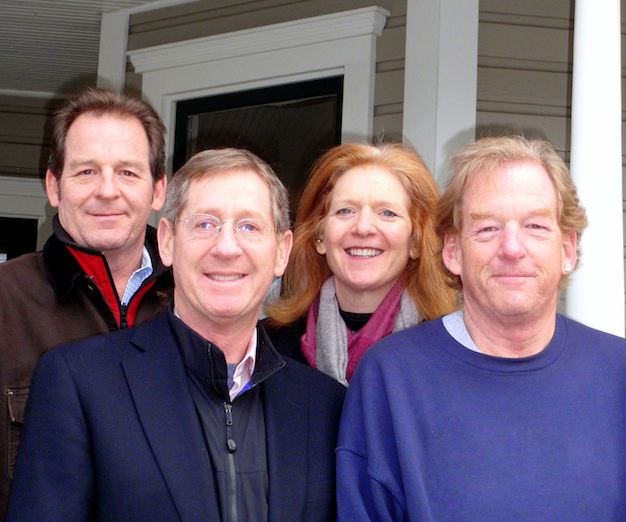
Recently I was able to taste the 2014 and 2015 Knudsen Vineyards Dundee Hills Chardonnays side-by-side. I
have previously reviewed the wines very favorably upon release, but found that I preferred the 2015 vintage.
The additional new oak and aging in oak added more structure, body and appeal for me. Both wines actually
improved when tasted over a 2-day period after opening and you might consider decanting when you open a
bottle. Both wines are stunning examples of the potential for Oregon Chardonnay

2014 Knudsen Vineyards Dundee Hills Willamette Valley Chardonnay
13.5% alc., pH 3.27, TA
0.63, 275 cases, $45, screwcap. A blend of Dijon 76 and 95 planted in Jory soil in 1995. Aged 6
months in French oak barrels, 20% new.
·
Moderately light golden yellow color in the glass. Lovely
aromas of lemon, white orchard fruits, buttery brioche and cold steel. Clean and refreshing on the
palate, with flavors of apple, Asian pear, lemon-lime and a hint of vanilla, with a sleek mouthfeel,
impeccable balance, and an uplifting finish. Still charming when tasted two days later from a
previously opened and re-corked bottle.
Score: 94

2015 Knudsen Vineyards Dundee Hills Willamette Valley Chardonnay
14.0% alc., pH 3.33, TA
0.71, 320 cases, $45, screwcap. Harvest Brix 22.6. Dijon clones 95 and 76 planted in 1995 in Jory
soils. Aged 10 months in French oak barrels, 27% new.
·
Moderately light golden yellow color in the
glass. Slightly riper fruited with more body than the 2014 vintage version. Nicely perfumed with
aromas of lemon curd, cut apple, nectarine, and buttery brioche. Highly satisfying on the palate with
flavors of citrus, pear, ripe apple, spice and vanilla, and a zing of lemon-lime on the juicy, prolonged
finish. Slightly creamy in texture and polished, combining the most desirable traits of Chardonnay. Still
stunning when tasted two days later from a previously opened and re-corked bottle.
Score: 96
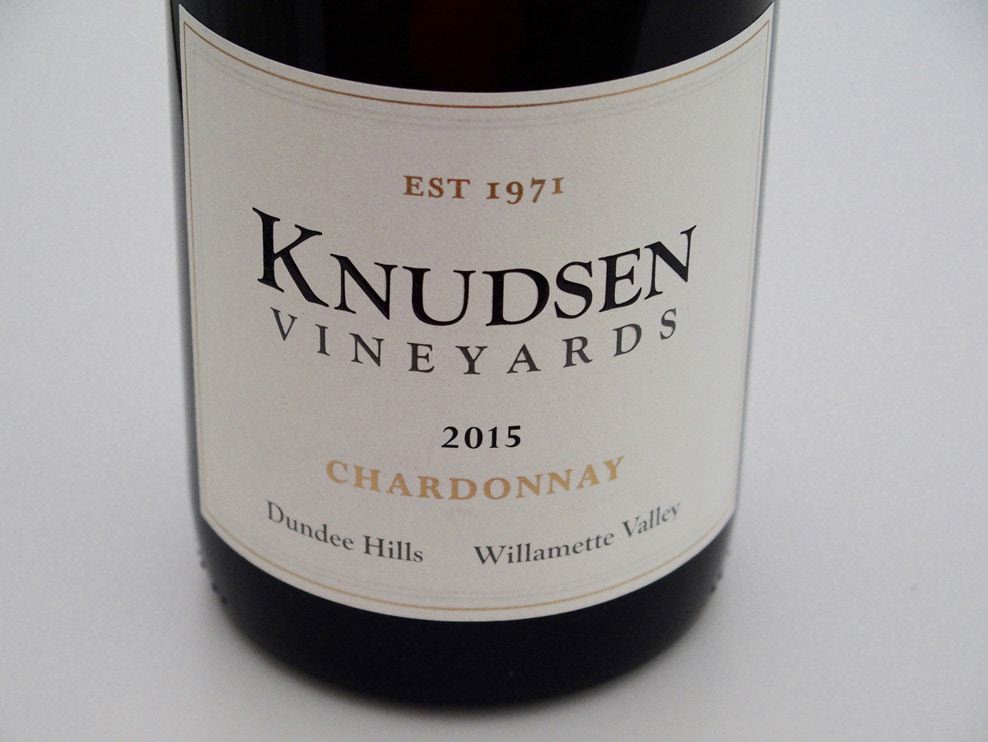
Walter Scott Wine, Salem, Oregon
Walter Scott was started in 2008 by partners Ken Pahlow and Erica Landon after they spent years living,
studying and working within the Oregon wine industry. Ken spent 18 years crafting wine alongside some of
Oregon’s top winemakers, learning both production and marketing. Erica is both an Advanced Sommelier and
wine educator, focusing much of her passion on the Willamette Valley. The name, “Walter Scott,” honors two
men who meant the world to Ken. Walter, Ken’s grandfather, was a flight engineer for TWA and taught Ken
there were no limits to what you can accomplish if you set your mind to it. Scott was Ken’s nephew, a fearless
sort whose time was cut short, teaching Ken that if you have ambitions you must act on them as life is very
short.
In 2012, Sue and Andy Steinman (annual attendees of IPNC) joined the winery, helping the business realize
goals and grow production to 3,000 cases. The winery specializes in Pinot Noir, Chardonnay and Pinot Blanc
from exceptional vineyards sourced primarily from the Eola-Amity Hills AVA of the Willamette Valley. The winery
is a proud member of the Deep Roots Coalition. The wines are in high demand and sell out quickly after
release. The reviewed wines (and Pinot Noirs reviewed elsewhere in this issue) were bottled in mid-December
2016 and are still young. Visit the website at www.walterscottwines.com.
The word that came to mind when I tasted the 2015 Walter Scott Chardonnays was precise. The wines were
very focused and impeccably crafted in a precision manner.

2015 Walter Scott Freedom Hill Vineyard Willamette Valley Oregon Chardonnay
13.2% alc., 150 cases,
$50. Vineyard farmed by the Dusschee family. The wine was fermented and aged in a new puncheon
and four neutral barrels for 11 months with 100% native yeast fermentation and minimal lees stirring.
The wine was blended and finished in stainless steel for an additional 3 months.
·
Light golden yellow
color in the glass. A highly distinctive wine offering appealing aromas of pear, cut apple, spice, buttery
brioche, nuts and a touch of vanillin. Bright, clean and crisp with bracing, steely acidity, offering flavors
of Honeycrisp apple, subtle citrus fruits and complimentary oak notes. When tasted the following day
from a previously opened and re-corked bottle, the lovely apple aromas and flavors were even more inviting,
the acidity had moderated and integrated. A unique, apple-fruited joy.
Score: 94

2015 Walter Scott Cuvée Anne Willamette Valley Oregon Chardonnay
13.2% alc., 490 cases,
$40. A blend from the winery’s best Chardonnay sites, including Freedom Hill, X Novo and Gibson
vineyards. The wine is a reserve blend that represents the winery’s vision of Oregon Chardonnay. The
juice was fermented and aged in a new puncheon and four neutral barrels for 11 months with 100%
native yeast fermentation and minimal lees stirring. The wine was blended and finished in stainleess
steel for an additional 3 months.
·
Light golden yellow color in the glass. Captivating steely, stony, flinty
aromas matched to fruit aromas of citrus, white peach and pear. Highly mineral-driven, with flavors of
lemon-lime, pear and green apple offering a toned and trim impression, finishing with a quenching, steely
attitude. A slight bit of tannin adds structure and the slightly creamy mouthfeel adds comfort. Remarkable poise
and immense charm.
Score: 95

2015 Walter Scott X Novo Eola-Amity Hills Oregon Chardonnay
13.5% alc., 200 cases, $50.
Vineyard planted by Craig and Robin Williams of California Cabernet fame. Sourced from a block that
is planted to fifteen different clones of Chardonnay making it one of the most unique sites on the West
Coast. The wine was fermented and aged in a new puncheon, a second fill puncheon, and a few
neutral barrels for 11 months with 100% native yeast fermentation and minimal lees stirring. The wine
was blended and finished in stainless steel for an additional 3 months.
·
Moderately light golden yellow
color in the glass. Aromas of slate, steel, oak and lemon oil lead off. Good richness of citrus and
creme caramel flavors with a subtle flinty note, showing admirable harmony, a slightly viscous texture, and a
juicy, lemon-driven finish. Still gloriously fresh when the tasted the following day from a previously opened and
re-corked bottle, with all reductive notes resolved. A high-collared, seductive wine that defies adequate
descriptors.
Score: 96
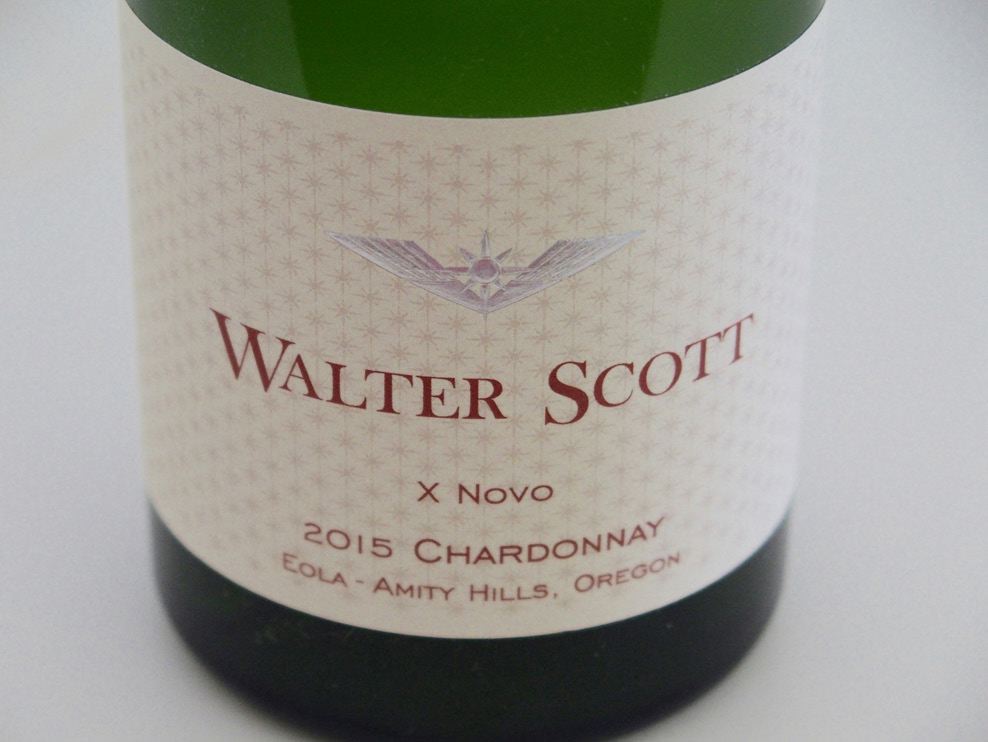
VIDON Vineyard, Newberg, Oregon
VIDON (Vee-dohn) is a boutique winery and petite vineyard founded by Vicki and Don Hagge. The property
was acquired in 1999 and planting of the first Pinot Noir began in 2000. The owners make the wine and sell it
all on their property outside Newberg in the Chehalem Mountains. Of a total production of between 2,000 and
2,500 cases, a small amount of Chardonnay is produced. Very little stainless is employed, but food-grade
polyethylene oxygen-permeable tanks are sometimes used for aging. Argon is used to displace oxygen, SO2
use is low, and no enzymes or additives are part of vinification. Glass closures are preferred. Oh, by the way,
Don used to be an aerospace scientist and he says, “You don’t have to be a rocket scientist to make good
wine, but it doesn’t hurt if you are.” Visit www.vidonvineyard.com for extensive information about this unique
winery.

2015 VIDON Vineyard Estate Chehalem Mountains Willamette Valley Chardonnay
12.9% alc.,
pH 3.20, TA 0.60, RS 0.02%, $35, screwcap. Dijon clones 76 and 95 from a 1.25-acre block with a
vine density of 1,244 per acre. Indigenous fermentation in a steel tank. The wine underwent
malolactic fermentation and aging in French oak barrels and flex tanks.
·
Moderate golden yellow color
in the glass. Aromas of lemon oil, pear, apple, wild flower, old book and vanilla lead to a straightforward
style that offers flavors of lemon, apple and melon with good integration of oak. Food friendly
and a good value.
Score: 88
2015 VIDON Vineyard Estate Apollo Chehalem Mountains Willamette Valley Chardonnay
12.9% alc., pH
3.20, TA 0.60, RS 0.02%, 25 cases, $60, glass closure. Winemaker Don Hagge was a member of the Apollo
team that landed the Apollo 11 spacecraft on the moon 7/20/69. This wine represents the winemaker’s favorite
barrel.
·
Moderate golden yellow color in the glass. Shy aromas of lemon curd, white stone fruits and petrichor.
Very appealing on the palate, with subtle flavors of citrus, and pear backed by well-integrated acidity. Discreetly
rich in texture with a juicy and refreshing finish.
Score: 92
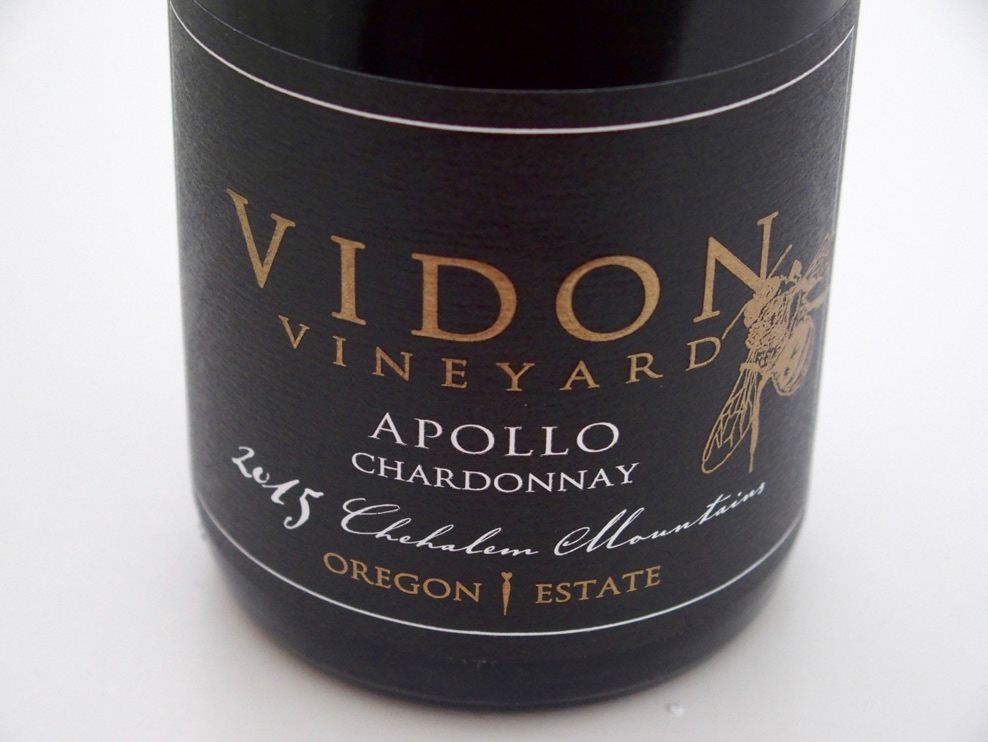
More Chardonnay
2015 Big Table Farm Willamette Valley Oregon Chardonnay
13.3% alc., 950 cases, $45. Released March
6, 2017. Poured at the 2017 Oregon Chardonnay Celebration. Sourced from six vineyards, barrel fermented
with indigenous yeast and aged 11 months in French oak barrels,10% new. Bottled after 11 months of aging
without fining or filtration. Label is one of Clare’s honey bees humping a thistle.
·
Light golden yellow color with
slight haze in the glass. Highly aromatic, with profuse scents of lemon curd, pear, butter, oak and cold steel.
Engaging on the palate, with flavors of lemon, honey, nectarine and melon, finishing with a dry, tangy lemonlime
note. Enduring focus and tension. The bee’s knees.
Score: 92
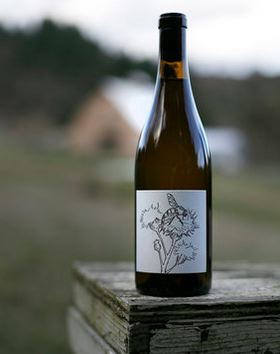

2014 Gran Moraine Yamhill-Carlton Willamette Valley Chardonnay
13.0% alc., pH 3.23, TA 0.63,
$45, Diam. Vineyard planted in 2005 to several different Dijon clones. One of the more westerly
vineyards in the Yamhill-Carlton AVA and thus subject to cooling afternoon breezes that roll off the
Pacific. Gently whole cluster pressed, natural fermentation over 16 months with monthly stirring of the
lees. After 16 months in barrel (7.5% new), the wine was fully racked to a stainless steel tank and left
to mature outside in the cold Northwest winter. The extended aging provided natural cold stability to
the wine.
·
Moderate golden yellow color and clear in the glass. The aromas of Meyer lemon, honey,
pear, white peach and buttery brioche soar from the glass. Crisp and bright in the mouth, with effusive flavors
of citrus, apple, apricot and spice with a flinty compliment. A stunning wine with inviting balance and a
mouthwatering finish. Still enduring when tasted the following day from a previously opened and re-corked
bottle. I also tasted this wine at a restaurant in San Francisco with the same impression and found it to be a
perfect food wine.
Score: 98
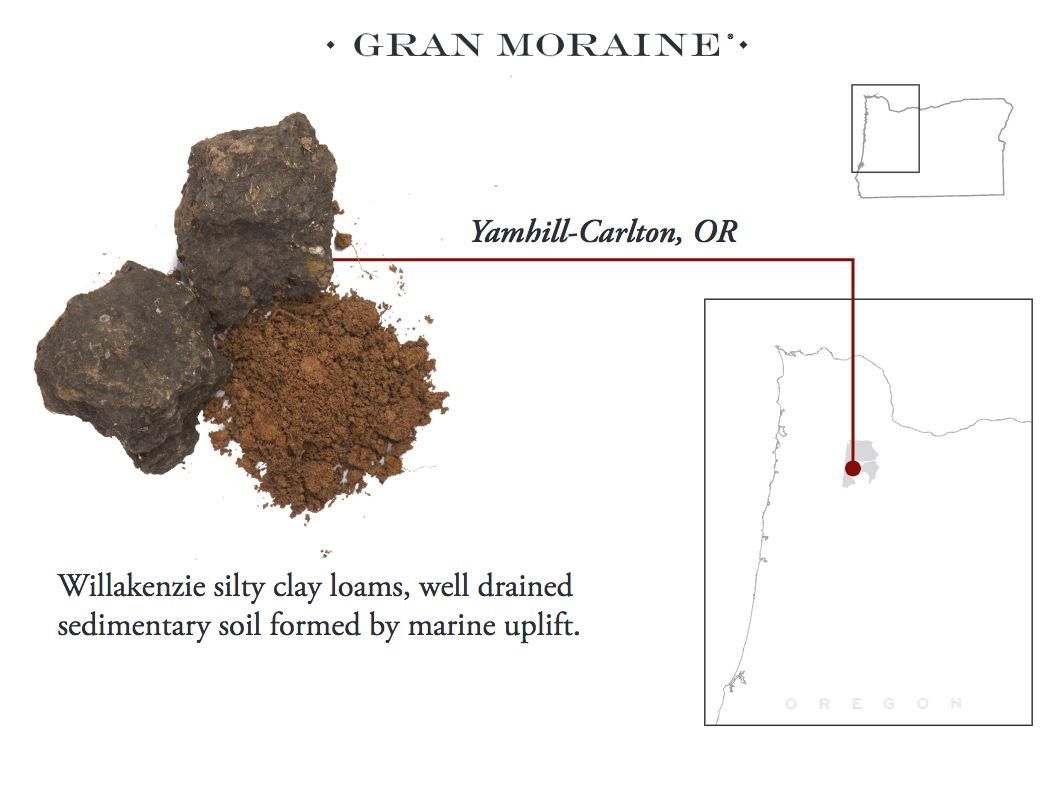

2015 Maryhill Columbia Valley Washington Chardonnay
14.5% alc., pH 3.43, TA 0.613, RS
0.1%, 4,941 cases, $16. From a family-owned and operated winery and amphitheater perched on a
bluff high above the Columbia River near Goldendale, Washington (90 minutes east of Portland, OR)
at the southern tip of the Columbia Valley AVA. 80% Milbrandt Vineyards and 20% Tudor Hills
Vineyard. Grapes whole cluster pressed on a Champagne cycle for gentleness. Juice partly
fermented in stainless steel tanks with 20% French oak staves.
·
Moderate golden yellow color in the
glass. Welcoming aromas of lemon curd, pear and persimmon, Very pleasurable in the mouth with a
creamy texture and generous flavors of lemon, white nectarine and pear. Easy going, with a juicy
finish. An astonishing value.
Score: 90
2015 Youngberg Hill Aspen Block Willamette Valley Chardonnay
13.4% alc., pH 3.12, TA 0.66, RS 0, 190
cases, $40, screwcap. Uplifted Marine sedimentary soils (Willakinzie). Clones 75, 76, 95 and 548. 10-year-old
vines. Aged 6 months in once-used French oak barrels including fermentation.
·
Light golden yellow color in the
glass. Shy aromas of apple, custard, citrus fruits and vanilla. A gentle style that is smooth on the palate,
offering fruit flavors of citrus, apple and melon integrated nicely with uplifting acidity.
Score: 90
|